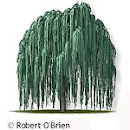The results are returned in the number of acres of biologically productive land that it takes to maintain my bad self. Overall, I require 22 such acres. The average for the U.S. is 24 acres. Worldwide, there exist only 4.5 such acres per person.
Here's the breakdown by type of resource used:
Food: 5.9 acres
Mobility: 1.7
Shelter: 6.7
Goods / Services: 7.7
TOTAL: 22 acres
One of the questions was about how many hours per year I spend flying. There were five possible answers: 100 hours, 25 hours, 10 hours, 3 hours, and 0 hours. I answered 25 hours. I had a vague idea that air travel is incredibly resource-intensive, so I redid the quiz, and this time reduced my air travel to 10 hours to see how much of a difference it would make.
Results:
Food: 5.9 acres
Mobility: 0.7
Shelter: 6.7
Goods / Services: 6.7
TOTAL: 20 acres
By spending just 15 fewer hours in the air, I would reduce my mobility acreage and my goods and services acreage by one acre each.
I also did a Carbon Footprint calculator at another website sponsored by a British organization. This calculator measures how much carbon dioxide I spew into the atmosphere with a questionnaire based on home energy use and modes of transportation.
The results: I personally belch 19,801 kg of CO2 into the sky each year.
On the one hand, I live in a city and drive less than 25 miles a week on average. On the other hand, our apartment is in a draughty old house that could use some good weatherstripping. And, once again, there's the air travel.




